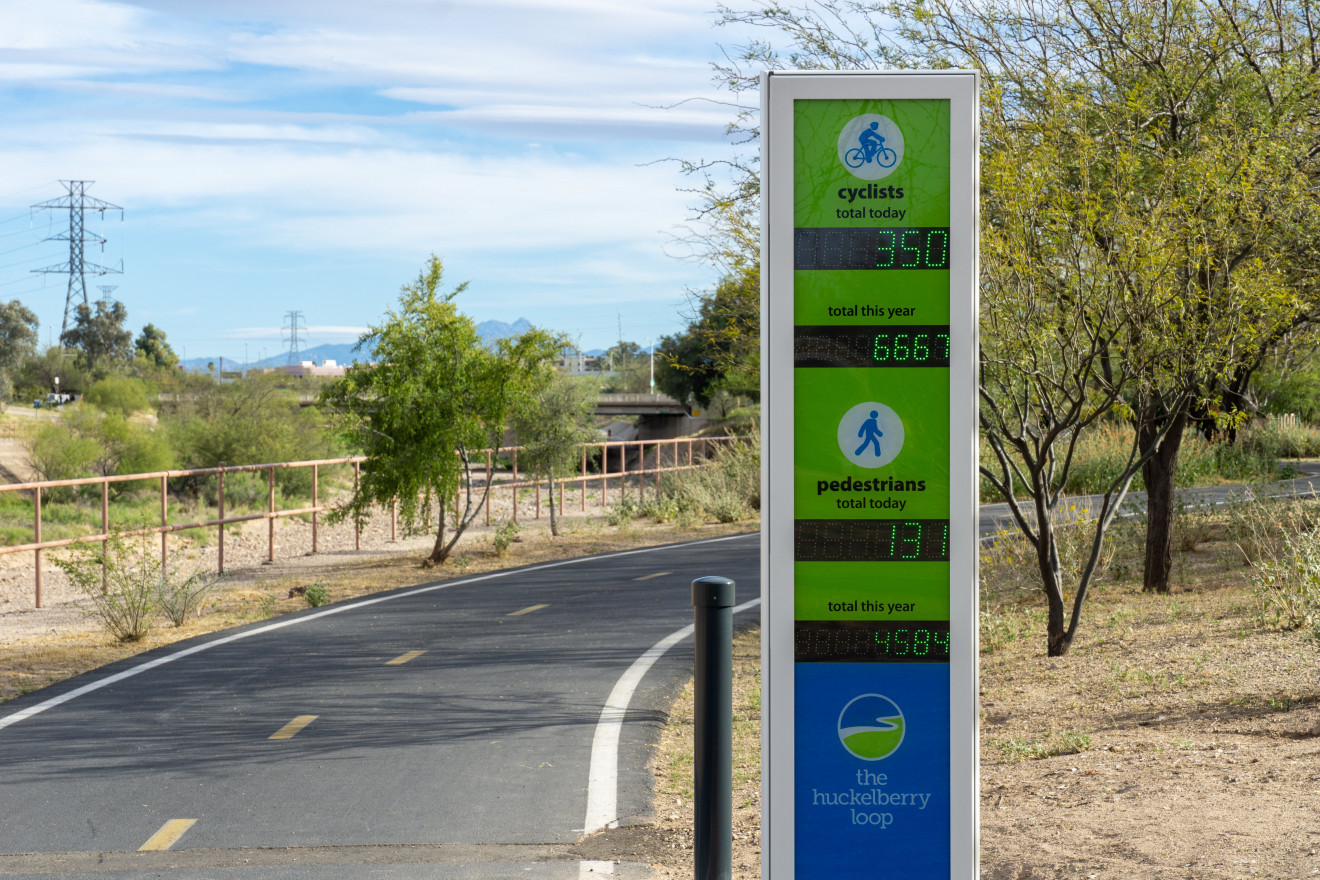
Hundreds of Tucson residents are using green spaces during the pandemic like the Loop, a 131-mile paved bikeway that now sees hundreds of daily users. (Jake Meyers / University of Arizona)

Hundreds of Tucson residents are using green spaces during the pandemic like the Loop, a 131-mile paved bikeway that now sees hundreds of daily users. (Jake Meyers / University of Arizona)
More than half of the world’s population is under orders to stay at home. Malls, movie theaters, gyms, bars, and restaurants have come to a close for the foreseeable future as we all start to re-imagine our hobbies and leisurely activities. While cases of COVID-19 were first reported in China in December 2019, the “crisis didn’t become real for many people until they saw images of empty plazas and public spaces,” explains Ramzy Bejjani, a Masters of Landscape Architecture student from the University of Arizona.

“We tend to undervalue our public spaces until we really need them,” Bejjani said.
Public spaces are becoming symbolic images of the crisis as the nation stays indoors. While many businesses have shut their doors, public green spaces are now the go-to place for many seeking refuge from their indoor routines.
“Utilizing green spaces during times of crises and empathizing with others attempting to cope, even at a distance, could provide a feeling of community and comfort,” explained Christina Baum, a Masters of Public Health student from the University of Arizona who works with the Pima County Planning Division.
“I do hope that as people become more desperate for the outdoors and physical activity, the value of green spaces for all community members will be recognized,” Baum said. “Many people seem to be hesitant about getting outdoors and exercising in public spaces because it’s unfamiliar to them, but this pandemic has been pushing people to engage in new activities.”

In parts of the country like Tucson, Arizona, people are starting to take advantage of clear skies and warm temperatures. Tucson is home to 128 parks and 131 miles of paved bikeways to connect community members with the outdoors.
These green public spaces have seen an uptick in usage as residents were ordered to remain at home and engage in social distancing.
“I believe that these trying times are shedding light on peoples’ desire to access public spaces,” said Julian Griffee, Climate Adaptation Planning Outreach Assistant to the City of Tucson and Urban Planning graduate student from the University of Arizona.
“I’m interested to see if the public will continue to adopt new habits like cycling and walking outdoors once the pandemic begins to calm down,” Griffee said. “Will we start to see cities across the nation promote and invest in public spaces and green infrastructure?”
In 2018, voters approved a $225 million bond package to improve park amenities, a sign that the Tucson community is committed to investing more in green spaces for public use.

“Public spaces like parks and bike pathways serve important contributions to our community’s public health by promoting healthy outcomes and reducing the number of injuries and fatalities associated with automobile incidents,” Griffee said. “But these green spaces also serve an important function in our fight to mitigate greenhouse gas emissions and adapt to climate change.”
Cities like Tucson are challenged by the onset of rising temperatures and the urban heat island effect. Increased concentrations of buildings and pavement absorb and retain heat that increase an urban environment’s energy costs, air pollution levels, and heat-related illness and mortality.
Urban mitigation and adaptation efforts to “green” public spaces are enabling residents to make more sustainable choices for their health and built environment.
“I think the pandemic is showing how adaptable we all can be,” Baum said. “I hope that some of the changes we are making today will empower us with skills and confidence to continue making those changes once it is over.”
